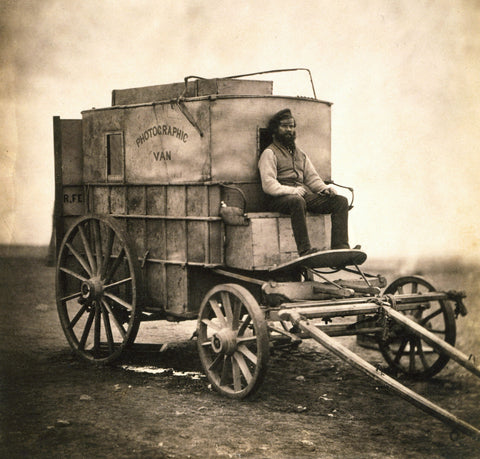
This Photographer Delivered the Truth About Crimea — But It Wasn’t What the British Crown Wanted to See
The first ever combat photographs were meant to rouse support for an invasion. But instead, a shocked public saw for the first time the grim, awful landscape of war.
The Crimean War (1853-1856) was meant to be a quick and simple war, or so it was sold to the public. Intervening to protect the Ottoman Empire from Russian expansionism, Britain had not fought a war in almost 40 years, and was convinced that their glorious empire was more than a match for upstart Russia. As the war dragged on, that optimism faded.
A dismayed British public were glued to appalling accounts in The Times of London of beleaguered soldiers who were as battered by infection and cholera as they were by Russian bullets. Bravado turned to war-weariness in less than a year. The British government, dismayed, assumed these accounts were wild exaggerations. They felt the public needed a reliable, objective truth of the state of the war — the public needed photographs.
Roger Fenton was a royal portrait photographer at this time. Photographs at the time were unwieldy to take, and required up to a few minutes of exposure, making capturing motion effectively impossible (and explaining the bland faces in early portraits). When asked by Prince Philip to photograph the war in Crimea, Fenton and his assistant, Marcus Sparling, designed a custom van to hold all the equipment they would need to capture the realities of war.
The realities of war shocked and appalled Fenton. He watched with horror the Siege of Sevastopol (the subject of Alfred, Lord Tennyson’s famous, haunting poem “Charge of the Light Brigade”), where dozens of battles over the course of a year cost British and allied forces over 100,000 lives. Fenton’s most famous photo, “The Valley of the Shadow of Death,” alludes to the poem as the actual place into which “the six hundred” rode.
Fenton was unable to capture the combat, but evocative photos of pockmarked battlefields and dismal living conditions showed war in a new light to a public only accustomed to exciting, heroic paintings and sketches. While future photographers would learn to lie with the lens, Fenton’s collection, now mostly at the Library of Congress, reminds us that sometimes the truth needs to be seen to be believed.
historynet magazines
Our 9 best-selling history titles feature in-depth storytelling and iconic imagery to engage and inform on the people, the wars, and the events that shaped America and the world.
